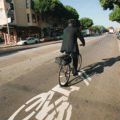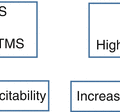© Springer International Publishing AG 2018
Stefano Masiero and Ugo Carraro (eds.)Rehabilitation Medicine for Elderly PatientsPractical Issues in Geriatricshttps://doi.org/10.1007/978-3-319-57406-6_5555. Healthcare and Rehabilitation for the Elderly in Italy
(1)
Department of Rehabilitation Medicine, ULSS9 Treviso – Ospedale Riabilitativo di Alta Specializzazione, Motta di Livenza, Italy
55.1 Demographics and Healthcare Organization in Italy
Italy is the sixth largest country in Europe and has the second highest average life expectancy: in 2011, it was 79.4 years for men and 84.5 for women (compared with 77.4 years for men and 83.1 years for women for the EU as a whole).
Italy has also one of the lowest fertility rate in the world: 1.4 births per woman in 2011. As a result, the population growth rate is very low (0.35), one of the lowest in Europe [1].
One of the major aspects of demography in Italy is therefore the growing number of elderly people: 6% of the country’s total population are over the age of 80, and the estimate for 2016 is that people of 65 years and over will reach the 21.3% of population. By the year 2050, this figure is expected to rise to 34% [2].
There are marked regional differences for both men and woman in most health indicators, reflecting the social and economic differences between the North and South.
The Italian health system has been ranked the second best in the world by the World Health Organization, with only the French system ranked higher. The Ministry of Health is ultimately responsible for the administration of the health service, but much of the control has been passed to the regional and the local health authorities known as ASL (azienda sanitaria locale). The whole system includes 21 regional health authorities and about 200 local authorities.
The Italian national healthcare service (SSN) was created in 1978 to replace a previous system based on insurances. In 2001, a reform increased the role and responsibility of the regional authorities in ensuring the basic healthcare services (livelli essenziali di assistenza, LEA) which must be provided to all citizens.
Therefore, the SSN covers all necessary treatments, providing universal coverage and free healthcare at the point of delivery. It should be noted, however, that there are variations in the quality of services between the regions; in general, with better coverage and quality in the North with respect to the South and Islands.
Local health units (ASL) are responsible for the management of all health services in their area, and private providers can also operate within the SSN.
The SSN is mainly funded through national taxes, with a relatively small co-payment for pharmaceuticals and outpatient care. In 2012, the health expenditure accounted for 9.2% of GDP. Public sources account for the majority of healthcare spending: private spending being about 18%, mainly in the form of out-of-pocket payments. Private insurance covers only about 1% of total expenditure [3].
Hospitals are reimbursed by the SSN according to a national diagnosis-related group (DRG)-like system. National-level tariffs cover the cost of public hospital admissions throughout the country. Private hospitals are reimbursed to the same DRG-specified level and additional costs borne by patients—through private insurance schemes.
55.2 Rehabilitation Services for the Elderly in Italy
The prevalence of chronic conditions, most of which determine disability, increases with age, reaching 75.6% in people between 65 and 74 years [4].
Stay updated, free articles. Join our Telegram channel

Full access? Get Clinical Tree






